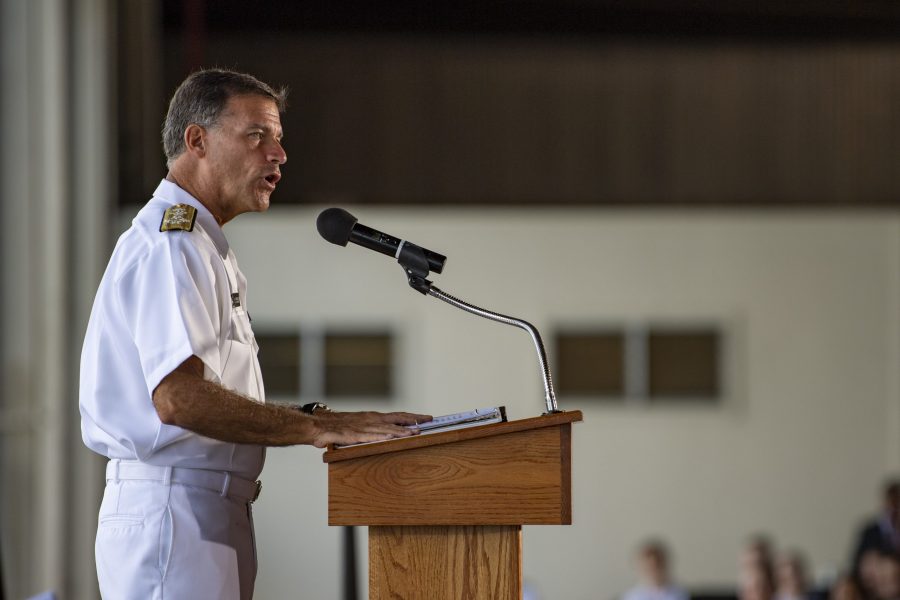President Donald J. Trump nominated Adm. John C. Aquilino to lead U.S. Indo-Pacific Command, the Pentagon announced on Dec. 3.
If confirmed by the Senate, Aquilino—who has led U.S. Pacific Fleet since May 2018—will replace Adm. Philip S. Davidson. He would be the command’s 26th leader since its inception in 1947, all of whom have been Navy admirals.
A 1984 Naval Academy graduate, Aquilino is a fighter pilot with more than 5,100 “mishap-free flight hours” and 1,150 carrier-arrested landings, according to his biography. Aquilino is also a graduate of the elite Navy Fighter Weapons School—known as Top Gun, the Joint Forces Staff College, and he completed the Harvard Kennedy School’s Executive Education Program in National and International Security. He’s flown the F-14A/B Tomcat and the F-18C/E/F Hornet, and also served as an adversary instructor pilot, flying the A-4, F-5, and F-16N. As a flag officer Aquilino served as the director of strategy and policy on the Joint Staff; deputy director of the U.S. Joint Forces Command; deputy chief of naval operations for operations, plans, and strategy; and commander of U.S. Naval Forces Central Command, among other assignments.
Aquilino would take command of the Defense Department’s “priority theater” as the U.S. military shifts its focus from decades of counterinsurgency operations in the Middle East to great power competition with China and Russia. In 2018, the command then known as Pacific Command added “Indo” to its name to reflect the growing importance of the Indian Ocean region.
Speaking in July 2019, shortly after the release of DOD’s first Indo-Pacific strategy report, Davidson said China’s military was on pace to surpass U.S. capabilities within a few years if significant changes are not made.
The department is committed to bolstering U.S. military capabilities in the theater. The Air Force is in the process of bedding down fifth-generation F-35A strike fighters at Eielson Air Force Base, Alaska, while the Marine Corps in October stood up its second F-35B squadron at Marine Corps Air Station Iwakuni, Japan. In September, the Air Force’s third Advanced Battle Management System demonstration took place in the Pacific, with some 11,000 Air Force, Army, Navy, and Marine Corps personnel, 100 aircraft, and several ships participating.
As of June 2019, there were more than 370,000 Airmen, Soldiers, Sailors, and Marines operating in the Indo-Pacific, along with more than 2,000 aircraft and 200 ships and submarines.
